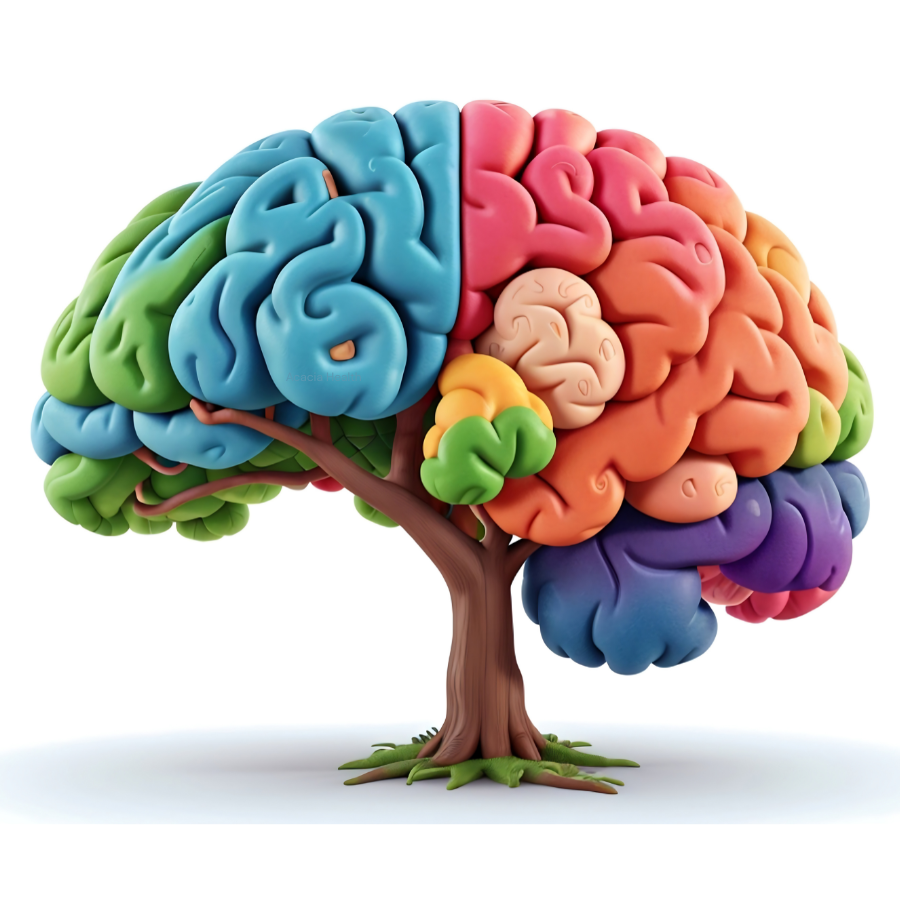In 2011, during an emotional conversation, my entire left arm became tingly. I lifted my left arm with my right hand and as I let my left arm go, it flopped to my lap, it was paralyzed! My mind raced, was it a pinched nerve, a stroke, a heart attack!? My partner said sincerely and knowingly, you’re having a panic attack. I knew she was right and my arm gradually came back to life. It was a really weird experience.
Researchers have discovered that the cause of my arm paralysis is not that my brain was injured, but rather that regions in my brain were misfiring. In other words, if you think of the brain as a computer, it was not a hardware problem, it was a software problem. In medicine, this software problem is called functional neurological disorder (FND).
FND can differ greatly in both its cause and manifestation from one person to another. For example, one person may develop left leg paralysis after dental surgery, while another person may develop Tourette syndrome following a viral infection. My understanding is that different regions of the brain can misfire due to system overload and that system overload can be caused by a combination of biological, psychological, and social threats.

As a physical therapist, I have seen people that report their FND related limb paralysis, muscle spasm (dystonia), or tremor, was triggered by some combination of an injury, surgery, viral illness, trauma, stress, or suppressed emotions. It turns out that my patients and I are not alone, with FND being the second most common condition to present to a neurologist after headaches. [1]
Hypermobility as a potential contributing factor to FND is a more recent discovery. In a study at the University of Melbourne, Australia, researchers contacted people with an FND diagnosis and asked them the five part joint hypermobility questionnaire questions and discovered that almost three quarters of the participants had a positive score for joint hypermobility and that joint hypermobility was a stronger predictor of FND than depression or anxiety. [2] In another study conducted at the Lausanne University Hospital in Switzerland, researchers performed neurological tests on a group of patients diagnosed with hypermobile Ehlers-Danlos syndrome (hEDS) or hypermobile spectrum disorder (HSD) that were referred to a chronic pain program and found that 92% of the hEDS/HSD patients had one or more functional neurological signs. [3] In this second study, the hEDS/HSD patients did not have an FND diagnosis as their main concern, rather functional neurological signs overlapped with pain and dysautonomia.
Experts think hypermobility increases the likelihood of developing FND for a variety of reasons. Hypermobility is associated with altered body awareness (proprioception), altered sensory processing (interoception), muscle and joint injuries, impaired autonomic function (dysautonomia/PoTS), and impaired sleep. It is thought that the accumulative overload of all or some of these insults could lead to FND. [2-6]
Because FND is the result of an overwhelmed neurological system, it often co-occurs with other medical problems, such as stroke, multiple sclerosis, and as I have just mentioned, hypermobility related medical complications. The overlapping conditions can make FND hard to diagnose as its presence may be covered up by another medical problem. As a physical therapist, the diagnosis of FND is beyond my scope of practice, though it has been recommended that we still keep an eye out for functional neurological signs and consider taking an FND approach to rehabilitation if appropriate.[3]

While FND is a serious medical condition, the rehabilitation can be surprisingly creative. It is quite amazing to see someone who is unable to walk forwards, yet can walk backwards or even dance. FND rehabilitation differs from typical rehabilitation significantly. Where we might focus on correcting a walking pattern by walking training in a person following a knee operation without FND, we do not try to force a correction in those with FND, rather we take an “alternate neurological route” to get the muscles to activate, build trust in the body, and change the brains expectations. For example, rather than someone with an FND related walking problem focusing on moving the knee in the correct way while they walk, they might have more success getting the knee to move by walking backwards while looking in the mirror and sipping water.
I have seen how powerful it can be for a person to witness their body unexpectedly working and how disheartening it can be for a person to continuously try to force a movement that just won’t happen. While I never assume neurological symptoms are FND unless proven, I think it is important to identify a functional neurological symptom, because it can fundamentally change how we approach rehabilitation.
If you suspect you may have a functional neurological symptom, you can talk to your doctor and learn more here:
- Stone, J., Carson, A., Duncan, R., Roberts, R., Warlow, C., Hibberd, C., Coleman, R., Cull, R., Murray, G., Pelosi, A., Cavanagh, J., Matthews, K., Goldbeck, R., Smyth, R., Walker, J., & Sharpe, M. (2010). Who is referred to neurology clinics?–the diagnoses made in 3781 new patients. Clinical neurology and neurosurgery, 112(9), 747–751. https://doi.org/10.1016/j.clineuro.2010.05.011
- Chen G, Castro-de-Araujo LFS, Olver JS, Kanaan RA. Joint hypermobility in functional neurological disorder: A cross-sectional study. J Psychosom Res. 2024 Jul;182:111807. doi: 10.1016/j.jpsychores.2024.111807. Epub 2024 May 21. PMID: 38788283.
- Fernandez A, Jaquet M, Aubry-Rozier B, Suter M, Aybek S, Berna C. Functional neurological signs in hypermobile Ehlers-Danlos syndrome and hypermobile spectrum disorders with suspected neuropathic pain. Brain Behav. 2024 Feb;14(2):e3441. doi: 10.1002/brb3.3441. PMID: 38409931; PMCID: PMC10897362.
- Nisticò V, Iacono A, Goeta D, Tedesco R, Giordano B, Faggioli R, Priori A, Gambini O, Demartini B. Hypermobile spectrum disorders symptoms in patients with functional neurological disorders and autism spectrum disorders: A preliminary study. Front Psychiatry. 2022 Aug 24;13:943098. doi: 10.3389/fpsyt.2022.943098. PMID: 36090363; PMCID: PMC9450495.
- Koreki, A., Eccles, J., Garfinkel, S., Critchley, H., Cope, S., Agrawal, N., Edwards, M., & Yogarajah, M. (2022). Hypermobility in patients with functional seizures: Toward a pathobiological understanding of complex conditions. Epilepsy & behavior : E&B, 132, 108710. https://doi.org/10.1016/j.yebeh.2022.108710
- Eccles JA, Beacher FD, Gray MA, Jones CL, Minati L, Harrison NA, Critchley HD. Brain structure and joint hypermobility: relevance to the expression of psychiatric symptoms. Br J Psychiatry. 2012 Jun;200(6):508-9. doi: 10.1192/bjp.bp.111.092460. Epub 2012 Apr 26. PMID: 22539777; PMCID: PMC3365276.




